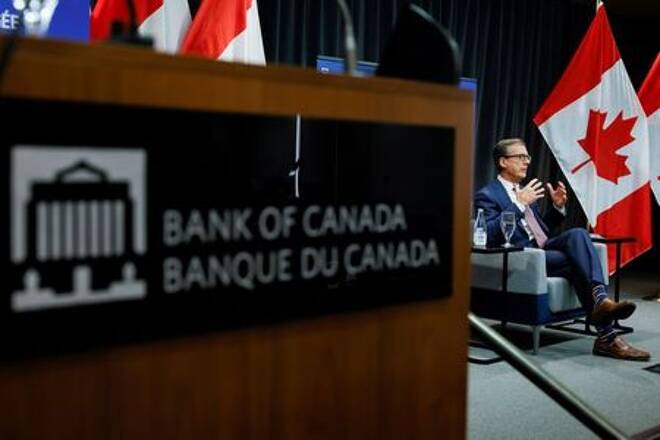Advertisement
Advertisement
Jobs Rebound, Hot Inflation Bolster Case for Bank of Canada Rate Hike
By:
OTTAWA (Reuters) - Canada's return to pre-pandemic job levels has likely sealed the deal on the Bank of Canada ending its quantitative easing program this month and, coupled with red hot inflation, bolsters the case for the central bank to move more quickly on rate hikes, analysts say.
In this article:
Canada added 157,100 jobs in September, blowing past expectations and finally recouping all three million lost at the height of the crisis. The job bonanza comes as inflation is at an 18-year high, double the Bank of Canada’s 2% target.
Governor Tiff Macklem argued on Thursday that the factors driving inflation were mostly temporary, and said the central bank was still seeing labor market pain – including a persistent worker-to-employer mismatch and slow wage growth.
But some analysts think the central bank is being too cautious and say there is no reason to continue acting like Canada’s economy is in the depth of a crisis, even if some struggles persist.
“We still have emergency levels of stimulus, which were put in place for deflation fears,” said Derek Holt, chief economist at Scotiabank Economics. “(Now) we’re way above our inflation target.”
“We should be looking at a rate hike before the end of this year. But they’re going to be loath to do that. I think they’re going to fight it for a while yet,” Holt added.
There is good reason for the central bank to reticent. While employment has returned to pre-pandemic levels, the increase in the size of Canada’s labor force during the pandemic leaves the country about 276,000 jobs short of full employment.
Many workers continue to struggle to find jobs, even as employers say they cannot hire enough people. Wages, meanwhile, are not rising at a normal rate, growing just 1.7% in September on the year, versus 4.3% year-over-year in February 2020.
“The wage data was still very moderate,” said Stephen Brown, senior Canada economist at Capital Economics, adding some of that could be transitional as lower wage workers return to work, dragging down the overall averages.
Still, “there’s not really much cost for the Bank to wait a few months to see how all this plays out,” Brown said.
What the Bank of Canada is likely to do is to taper its quantitative easing program to C$1 billion ($802 million) a week from C$2 billion a week, when it announces its next rate decision on Oct. 27.
This would move QE to a reinvestment phase, where new bonds purchased are simply replacing those that mature, effectively stopping new stimulus from being added to the economy.
Removing stimulus from the economy is different. Macklem has said the first step for doing that would be to hike rates and so far, the Bank has signaled that won’t happen until the second half of 2022.
Canada’s 2-year yield, which is sensitive to BoC rate hike expectations, rose 5.2 basis points at 0.690%, its highest level since March last year.
“We still expect the Bank of Canada to begin hiking a year hence, but the risks are rising rapidly that they begin earlier,” said Doug Porter, chief economist at BMO Capital Markets, in a note.
Porter now expects those hikes to unfold at the pace of once per quarter, versus once every six months.
The Canadian dollar climbed as much as 0.8% after the job data on Friday, touching its strongest level in more than two months at 1.2447 per greenback, or 84.34 U.S. cents.
For a look at all of today’s economic events, check out our economic calendar.
($1 = 1.2473 Canadian dollars)
(Reporting by Julie Gordon in Ottawa, additional reporting by Fergal Smith in Toronto; Editing by Alistair Bell)
About the Author
Reuterscontributor
Reuters, the news and media division of Thomson Reuters, is the world’s largest international multimedia news provider reaching more than one billion people every day. Reuters provides trusted business, financial, national, and international news to professionals via Thomson Reuters desktops, the world's media organizations, and directly to consumers at Reuters.com and via Reuters TV. Learn more about Thomson Reuters products:
Latest news and analysis
Advertisement
